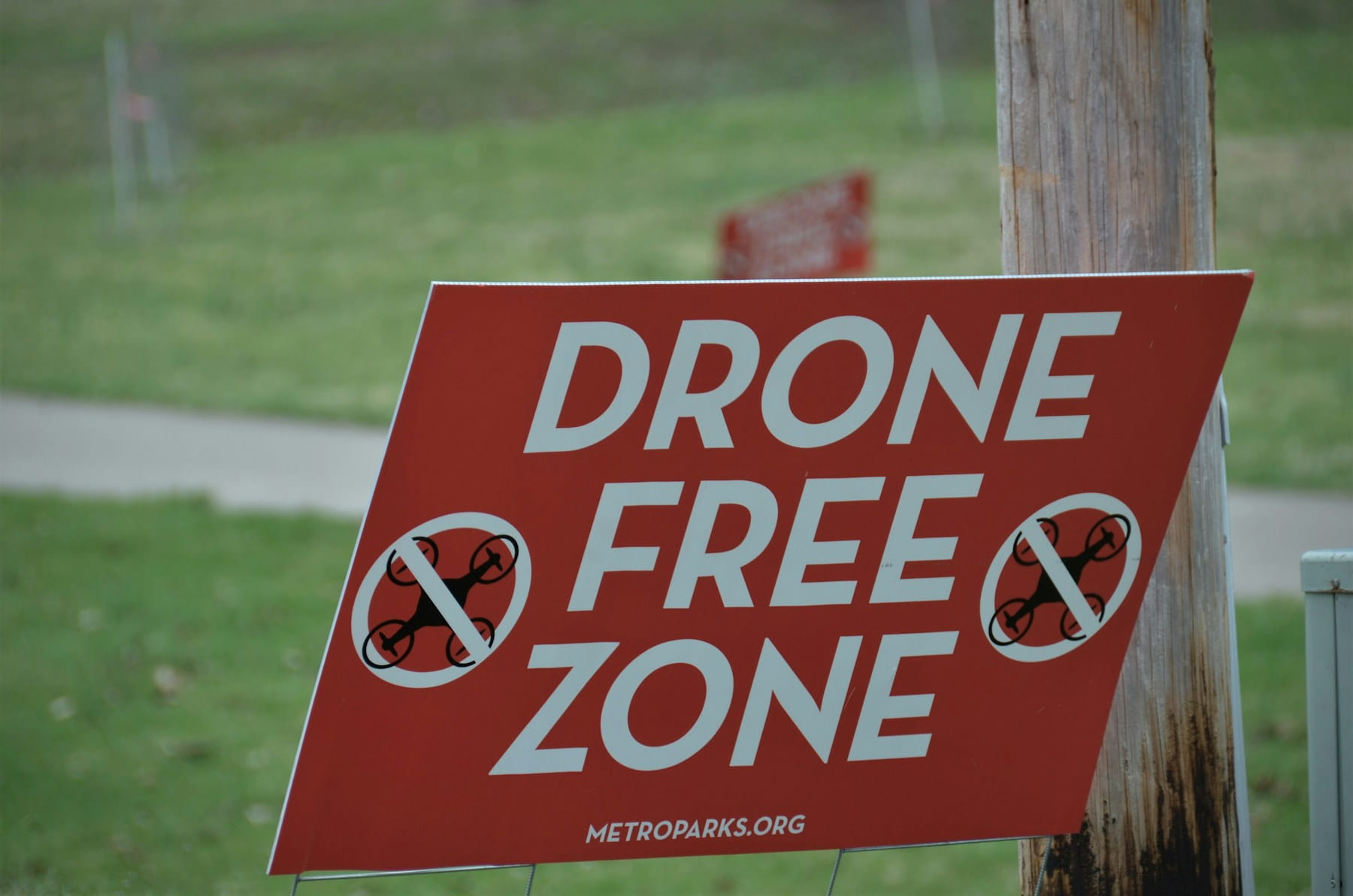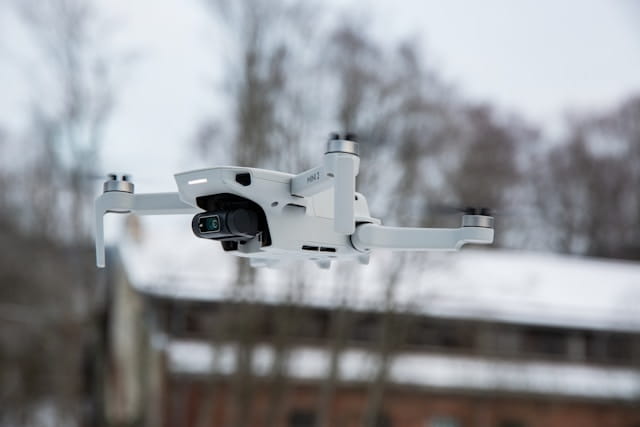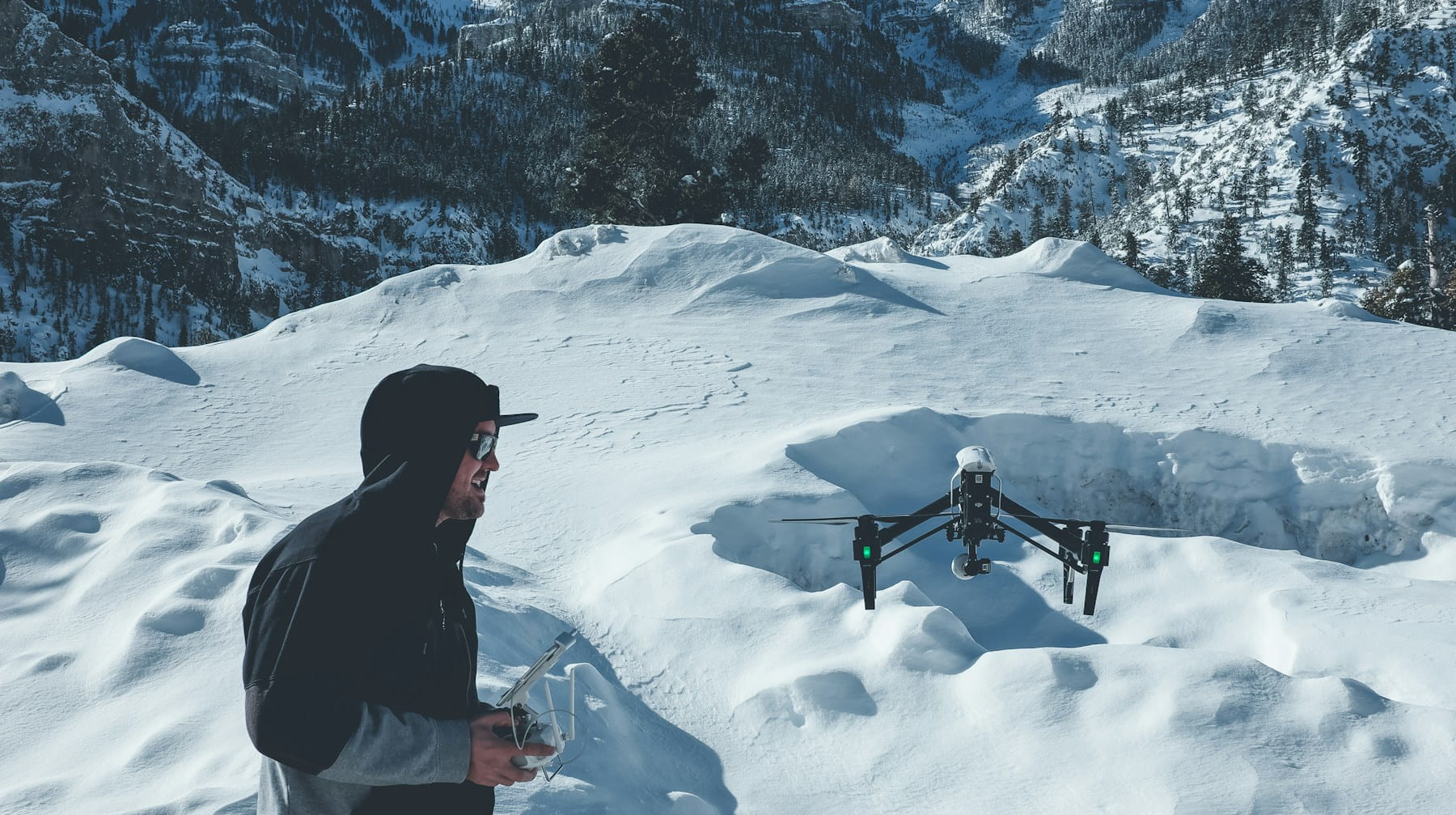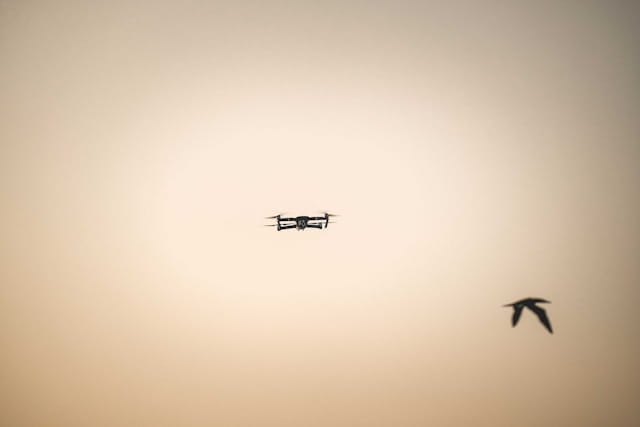Drone operations face numerous airspace restrictions that can ground flights before they even begin. These limitations range from permanent military installations to temporary presidential movements, creating a complex web of no-fly zones that operators must navigate daily.
The Federal Aviation Administration (FAA) establishes most airspace restrictions, but state and local governments can also prohibit drone takeoffs and landings from specific properties. Understanding these overlapping jurisdictions becomes critical for maintaining legal compliance and operational success.
Table of contents
- What qualifies as a no-fly zone
- Types of restricted airspace
- Permanent vs temporary restrictions
- Government authority over drone operations
- Manufacturer geo-fencing systems
- Authorization and unlocking procedures
- Compliance tools and resources
- Penalties for violations
- Best practices for operators
What qualifies as a no-fly zone
The term "no-fly zone" encompasses various restrictions that prevent drone operations in specific areas. These restrictions can apply to takeoff, landing, or flight through designated airspace.
Different authorities create these zones for distinct reasons. Military installations require protection from potential surveillance or interference. Airports need clear airspace for manned aircraft operations. National security areas around government buildings demand strict access controls.
The complexity arises because multiple layers of authority can overlap in a single location. A downtown area might fall under federal airspace restrictions, state property regulations, and local ordinances simultaneously. Each layer carries its own penalties and enforcement mechanisms.
Compliance integration: Modern drone compliance platforms help operators navigate these complex restriction environments by aggregating multiple data sources and providing real-time updates.
Federal airspace restrictions
The FAA controls all navigable airspace above the United States. This authority stems from federal aviation laws that preempt state and local airspace regulations. When the FAA designates airspace as restricted, no other authority can override that decision.
These federal restrictions typically protect critical infrastructure, military operations, or ensure aviation safety. The restrictions often extend vertically from the ground to specified altitudes, creating invisible barriers that drones cannot penetrate.
Local takeoff and landing prohibitions
State, local, tribal, and territorial governments retain authority over property use within their jurisdictions. While they cannot restrict airspace itself, they can prohibit drone takeoffs and landings from specific properties or areas.
This distinction creates an important nuance for operators. You might have federal authorization to fly through airspace above a park, but the city might prohibit launching your drone from within park boundaries. The operator must find an approved takeoff location outside the restricted property.
Types of restricted airspace
Different restriction categories carry varying levels of severity and unlock procedures. Understanding these categories helps operators plan flights and obtain necessary approvals.
| Restriction Type | Authority | Unlock Possibility | Typical Duration |
|---|---|---|---|
| Prohibited Areas | FAA/Military | No unlocking | Permanent |
| Restricted Areas | FAA | Case-by-case | Permanent |
| Temporary Flight Restrictions | FAA | Sometimes | Hours to weeks |
| Local No-Fly Zones | Local Government | Property dependent | Varies |
Prohibited areas
Prohibited areas represent the strictest form of airspace restriction. These zones exist around locations of national security importance, such as the White House, military bases, and certain government facilities.
No civilian aircraft—including drones—can operate in prohibited areas under any circumstances. The FAA does not issue waivers or special authorizations for these zones. Violations can result in serious federal charges and potential military intervention.
The Washington, D.C. area contains multiple prohibited zones that create a complex web of restrictions. These zones extend significant distances from their centers and affect drone operations throughout the metropolitan region.
Restricted areas
Restricted areas protect specific activities or installations while allowing some limited access under controlled conditions. Military training ranges, artillery firing zones, and sensitive government installations often fall into this category.
Some restricted areas operate continuously, while others activate only during specific times or activities. The operating schedule and contact information appear in published notices, allowing operators to plan around active periods.
Drone operators can sometimes obtain authorization to transit restricted areas when they're inactive. However, the approval process requires advance coordination and may involve significant delays.
Advanced operations: Complex missions such as BVLOS operations often require additional coordination with restricted area authorities due to their extended operational scope.
Temporary flight restrictions
Temporary Flight Restrictions (TFRs) create short-term no-fly zones around special events or emergency situations. These restrictions can appear quickly and catch unprepared operators by surprise.
Presidential movements generate some of the most common TFRs. When the President travels, a large restricted area moves with the aircraft and motorcade. These restrictions can ground drone operations across entire metropolitan areas for hours at a time.
Major sporting events, natural disasters, and space launches also trigger TFRs. The restrictions typically specify prohibited activities, affected altitudes, and duration. Some TFRs allow certain operations with prior coordination, while others prohibit all civilian flights.
Permanent vs temporary restrictions
The duration of restrictions significantly affects operational planning. Permanent restrictions appear on sectional charts and remain relatively stable over time. Temporary restrictions can emerge with little warning and disrupt planned operations.
Permanent restrictions allow operators to plan long-term flight corridors and establish regular operational procedures. Flight planning software can incorporate these known restrictions into automated route calculations.
Temporary restrictions require constant monitoring and flexible operational procedures. Operators must check for new TFRs before every flight and maintain contingency plans when restrictions appear unexpectedly.
Planning for permanent restrictions
Permanent restrictions become part of the operational landscape that experienced operators learn to navigate efficiently. These restrictions rarely change, allowing operators to develop standardized procedures and backup plans.
Smart operators identify multiple takeoff locations and flight corridors that avoid permanent restrictions. This preparation prevents last-minute scrambling when primary plans become unavailable.
Regular training on permanent restriction locations helps pilots avoid inadvertent violations. Many violations occur when operators become complacent about familiar restrictions or fail to account for expanded boundaries.
Adapting to temporary restrictions
Temporary restrictions test an operator's flexibility and monitoring procedures. The most successful operators maintain multiple information sources and check restrictions immediately before every flight.
Mobile applications and automated notification systems help operators stay informed about changing restrictions. However, these tools require active monitoring and cannot replace human judgment about operational impacts.
Flight crews should establish procedures for handling unexpected restrictions that appear during operations. Clear communication channels and decision-making authority help teams respond quickly to changing conditions.
Government authority over drone operations
Different levels of government exercise distinct types of authority over drone operations. Federal agencies control airspace, while local governments regulate property use and takeoff locations.
This division of authority creates complex compliance requirements that operators must understand thoroughly. Violations of federal airspace restrictions carry different penalties than violations of local property regulations.
Federal aviation authority
The FAA maintains exclusive authority over navigable airspace throughout the United States. This federal preemption prevents state and local governments from creating conflicting airspace regulations.
Federal aviation regulations apply uniformly across all states and localities. Operators can rely on consistent rules regardless of where they operate, though local property restrictions still vary significantly.
The FAA can delegate certain authorities to other federal agencies for specific purposes. Military installations, for example, may establish their own airspace restrictions under FAA oversight.
State and local property authority
State and local governments cannot regulate airspace, but they retain full authority over property use within their jurisdictions. This authority allows them to prohibit drone takeoffs and landings from specific locations.
Property restrictions can apply to publicly owned lands like parks, schools, and government buildings. Private property owners generally control drone access to their own land, though some jurisdictions impose additional regulations.
Local restrictions often reflect community concerns about privacy, noise, or safety. These concerns may not align with federal aviation priorities, creating potential conflicts between different regulatory objectives.
Manufacturer geo-fencing systems
Drone manufacturers implement their own geo-fencing systems that can prevent flights in restricted areas. These systems operate independently of government regulations and may impose additional restrictions beyond legal requirements.
DJI's GEO Zone System represents the most widely encountered manufacturer restriction system. This system categorizes areas into different warning and restriction levels, each with distinct unlocking procedures.
The manufacturer systems aim to prevent accidents and reduce regulatory scrutiny of the drone industry. However, they can also create operational challenges when technical systems impose restrictions beyond legal requirements.
Understanding manufacturer zones
Different manufacturers use varying approaches to geo-fencing implementation. Some systems rely on GPS coordinates and locally stored databases, while others require internet connectivity for real-time updates.
Zone classifications typically range from simple warnings to complete flight prevention. Warning zones allow flight with acknowledgment of risks, while restriction zones prevent takeoff entirely without specific unlocking procedures.
The accuracy and timeliness of manufacturer databases can create discrepancies with official government restrictions. Operators may encounter manufacturer restrictions in areas where government authorities permit flight, or vice versa.
Manufacturer unlocking procedures
Most manufacturer systems provide unlocking mechanisms for authorized operators. These procedures typically require user verification, acknowledgment of responsibilities, and sometimes proof of authorization.
Unlocking procedures vary significantly between manufacturers and drone models. Older drone models may not support unlocking at all, while newer systems offer multiple unlocking methods for different zone types.
The unlocking process often requires internet connectivity and account verification. Operators should complete unlocking procedures before traveling to remote locations where internet access may be limited.
Authorization and unlocking procedures
Obtaining authorization for restricted airspace involves multiple steps and agencies depending on the specific restriction type. The process can range from simple online applications to complex military coordination procedures.
Different restriction types require different authorization approaches. Some areas allow self-unlocking through manufacturer apps, while others demand formal FAA approval or military coordination.
Time requirements for authorization vary dramatically. Simple airspace authorizations might process within hours, while complex military coordination could take weeks or months.
LAANC authorization system
The Low Altitude Authorization and Notification Capability (LAANC) system provides near real-time authorization for operations in controlled airspace. This system streamlines the approval process for routine operations near airports.
LAANC covers many common operational scenarios but does not address all restriction types. Prohibited areas, active TFRs, and certain military zones still require separate authorization processes.
Approved LAANC applications provide specific operational parameters including maximum altitudes, time limits, and geographic boundaries. Operators must remain within these approved parameters to maintain legal compliance.
Manual authorization requests
Complex operations or sensitive locations may require manual review and approval. These requests typically take longer but can accommodate specialized operational requirements.
Manual requests should include detailed operational plans, safety analyses, and coordination procedures. The quality and completeness of application materials significantly affect approval timelines and success rates.
Some manual authorizations include ongoing reporting requirements or operational restrictions. Operators must understand and comply with all approval conditions throughout the operation period.
Compliance tools and resources
Multiple tools and resources help operators identify restrictions and maintain compliance. Government agencies, private companies, and drone manufacturers all provide different types of compliance assistance.
The FAA's B4UFLY mobile application provides official restriction information directly from government sources. This tool covers federal restrictions but may not include all local property regulations.
Commercial flight planning services often integrate multiple data sources to provide comprehensive restriction information. These services can automate compliance checking and provide detailed operational guidance.
Official government resources
Government websites and mobile applications provide authoritative restriction information directly from regulatory agencies. These sources offer the most reliable information but may lack user-friendly interfaces or real-time updates.
The FAA website includes detailed information about permanent restrictions, current TFRs, and authorization procedures. Aviation charts and publications provide additional technical details for complex operations.
Military and other federal agencies maintain their own restriction databases and notification systems. Operators working near military installations should establish direct communication channels with appropriate authorities.
Third-party compliance tools
Commercial compliance tools aggregate information from multiple sources and provide user-friendly interfaces for operational planning. These tools often include features like automated alerts, route planning, and restriction visualization.
The accuracy and timeliness of third-party tools depend on their data sources and update procedures. Operators should verify critical restriction information through official channels before conducting sensitive operations.
Some third-party tools integrate with drone manufacturer systems to provide seamless compliance workflows. These integrations can automate unlocking procedures and provide real-time operational guidance.
Penalties for violations
Violations of no-fly zone restrictions carry serious penalties that can include substantial fines, license revocation, and criminal charges. The severity of penalties depends on the specific restriction violated and the circumstances of the violation.
Federal airspace violations typically carry the most severe penalties. The FAA can impose civil penalties up to $27,500 per violation for individuals and up to $275,000 for organizations.
Criminal penalties may apply for violations involving national security areas or reckless operations that endanger other aircraft. These charges can result in imprisonment and permanent prohibitions on aviation activities.
Civil penalties
The FAA uses civil penalty procedures for most routine violations of airspace restrictions. These penalties focus on deterrence and education rather than punishment.
Penalty amounts consider factors like the operator's experience level, cooperation with investigations, and safety impact of the violation. First-time violators may receive reduced penalties or educational alternatives.
Civil penalty procedures include opportunities for operators to present their cases and negotiate settlement agreements. Legal representation can help operators understand their options and develop effective responses.
Criminal enforcement
Serious violations or repeat offenses may trigger criminal enforcement actions. These cases involve federal prosecutors and can result in jail time and substantial fines.
Criminal cases typically involve intentional violations, operations that threaten other aircraft, or activities in highly sensitive areas. The government must prove intent and knowledge to secure criminal convictions.
Criminal penalties create permanent records that can affect future employment and licensing opportunities. Operators should take all restriction violations seriously and seek legal advice when facing criminal charges.
Best practices for operators
Successful restriction compliance requires systematic procedures and continuous education. The most effective operators develop comprehensive workflows that address both routine operations and emergency situations.
Regular restriction monitoring should become part of standard operational procedures. Operators should check restrictions at multiple points: during mission planning, immediately before flight, and periodically during extended operations.
Training programs should cover both current restrictions and procedures for handling new or unexpected limitations. Crews need to understand not just where they cannot fly, but why restrictions exist and how to respond appropriately.
Pre-flight planning procedures
Thorough pre-flight planning prevents most restriction violations. Operators should develop standardized checklists that address all relevant restriction types and information sources.
Essential preparation: Before every flight, follow a comprehensive pre-flight checklist template that includes restriction verification, authorization confirmation, and contingency planning.
Flight planning should include identification of primary and alternate takeoff locations, route planning around known restrictions, and contingency procedures for unexpected limitations.
Documentation procedures should record restriction checks and authorization status for each flight. This documentation provides legal protection and helps identify procedural improvements over time.
Real-time monitoring
Restrictions can change during flight operations, particularly temporary restrictions related to emergency situations or VIP movements. Operators need procedures for monitoring and responding to changing conditions.
Ground support personnel can monitor restriction databases and maintain communication with flight crews about developing situations. Clear communication protocols help ensure timely responses to new restrictions.
Technology tools can provide automated alerts about new restrictions affecting planned operations. However, human oversight remains critical for interpreting restriction impacts and making operational decisions.
Emergency procedures
Despite careful planning, operators may encounter unexpected restrictions that require immediate response. Clear emergency procedures help crews respond safely and legally to these situations.
Emergency landing procedures should identify safe landing areas outside restricted zones. Crews should know how to quickly assess landing options and execute safe termination of flight operations.
Communication procedures should establish who to contact for different types of emergencies and restriction violations. Quick reporting can minimize penalties and demonstrate good faith compliance efforts.
Stay Compliant and Fly with Confidence
Drone operations in restricted airspace demand careful attention to multiple overlapping authorities and constantly changing conditions. Success requires systematic procedures, reliable information sources, and flexible response capabilities. The investment in proper compliance procedures pays dividends through reduced violation risks and more efficient operations.
Modern platforms like DroneBundle transform complex restriction compliance from a burden into a streamlined process. By integrating real-time airspace data, automated restriction checking, and comprehensive authorization tracking, operators can focus on mission success rather than regulatory complexity.
Ready to simplify your restriction compliance?
Start your free trial today and discover how comprehensive flight planning tools can help you navigate complex restriction environments with confidence. No credit card required.
Book a demo to see how DroneBundle's restriction management features can streamline your compliance workflows and keep your operations both safe and legal.



